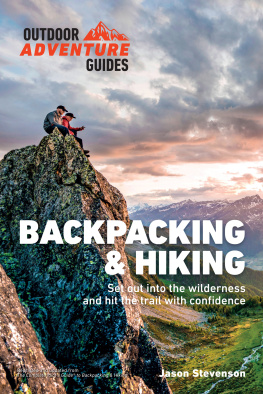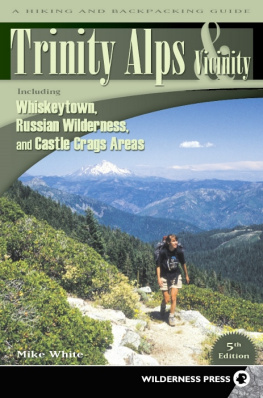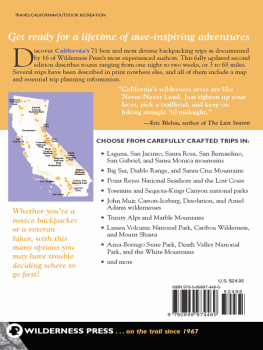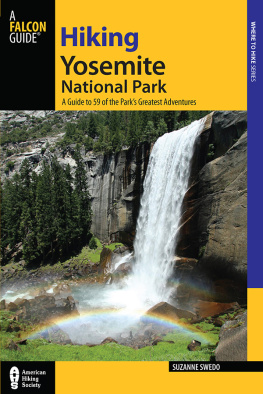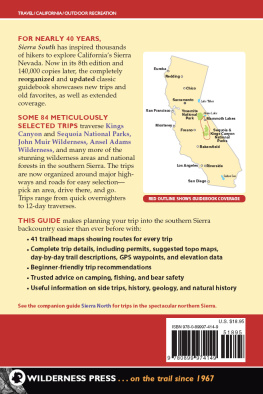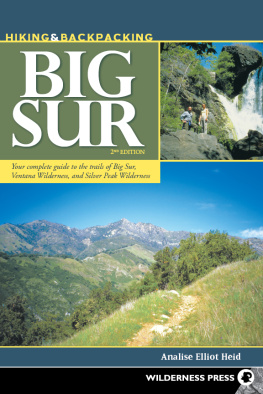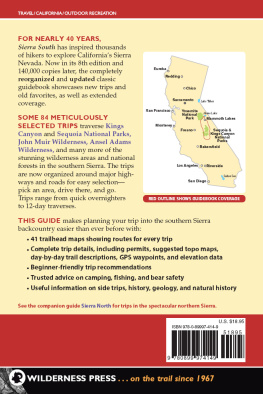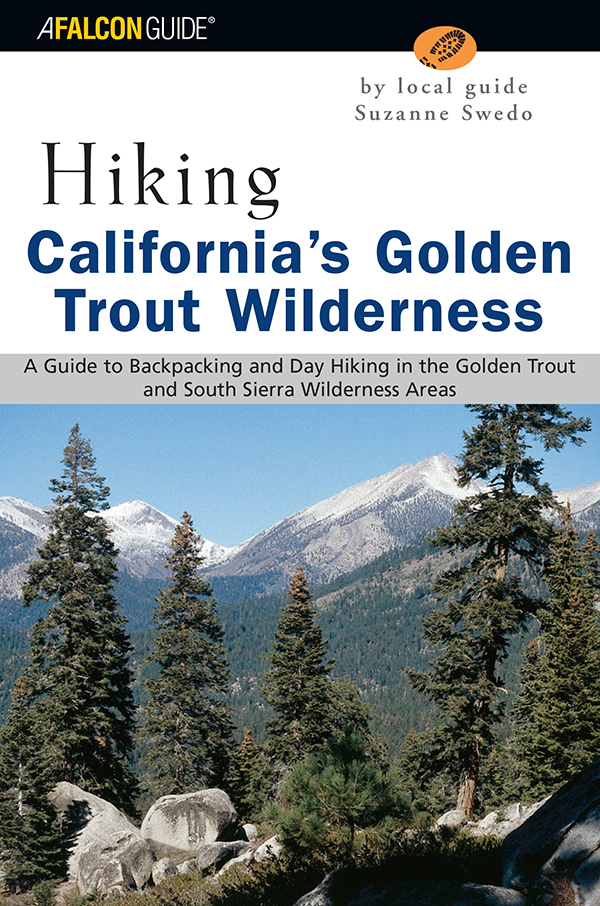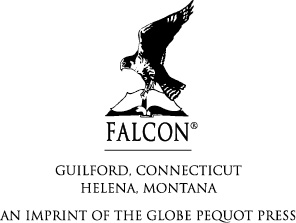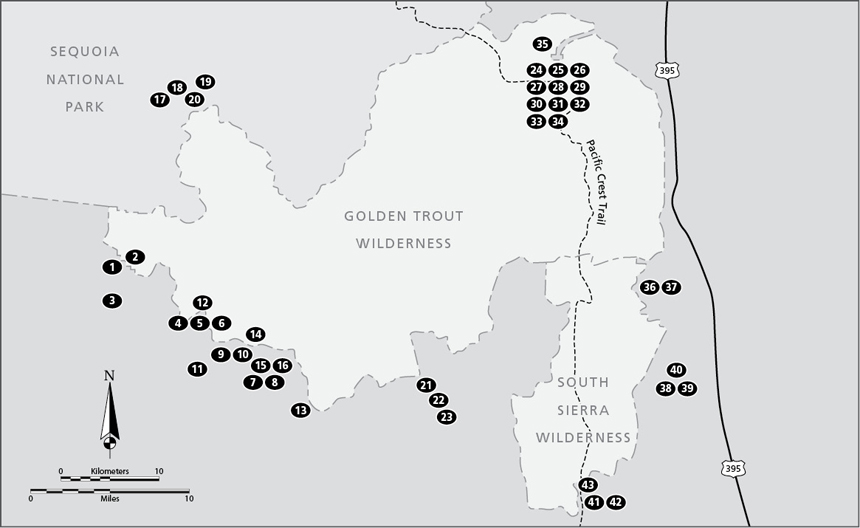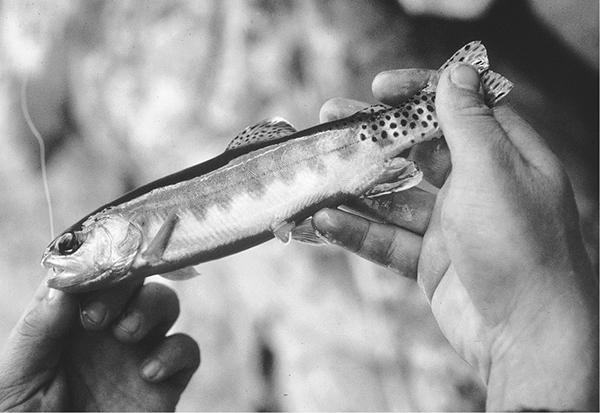Hiking Californias Golden Trout Wilderness
A Guide to Backpacking and Day Hiking in the Golden Trout and South Sierra Wilderness Areas
Suzanne Swedo
Help Us Keep This Guide Up to Date
Every effort has been made by the author and editors to make this guide as accurate and useful as possible. However, many things can change after a guide is publishedtrails are rerouted, regulations change, techniques evolve, facilities come under new management, etc.
We would love to hear from you concerning your experiences with this guide and how you feel it could be improved and kept up to date. While we may not be able to respond to all comments and suggestions, well take them to heart and well also make certain to share them with the author. Please send your comments and suggestions to the following address:
The Globe Pequot Press
Reader Response/Editorial Department
P.O. Box 480
Guilford, CT 06437
Or you may e-mail us at:
editorial@GlobePequot.com
Thanks for your input, and happy travels!
In Memory of Tom
Copyright 2004 by The Globe Pequot Press
All rights reserved. No part of this book may be reproduced or transmitted in any form by any means, electronic or mechanical, including photocopying and recording, or by any information storage and retrieval system, except as may be expressly permitted by the 1976 Copyright Act or in writing from the publisher. Requests for permission should be addressed to The Globe Pequot Press, P.O. Box 480, Guilford, Connecticut 06437.
Falcon and FalconGuide are registered trademarks of The Globe Pequot Press.
All photographs by Suzanne Swedo
Maps created by Trailhead Graphics The Globe Pequot Press
Library of Congress Cataloging-in-Publication Data
Swedo, Suzanne, 1945
Hiking Californias Golden Trout Wilderness: a guide to backpacking and day hiking in the Golden Trout and South Sierra wildernesses / Suzanne Swedo. 1st ed.
p. cm. (A Falcon Guide)
Includes bibliographical references (p. ).
ISBN 978-0-7627-9748-6
1. HikingCaliforniaGolden Trout WildernessGuidebooks. 2. HikingCaliforniaSouth Sierra Wilderness Guidebooks. 3. Golden Trout Wilderness (Calif.)Guidebooks. 4. South Sierra Wilderness (Calif.)Guidebooks. I. Title. II. Falcon guide.
GV 199.42.C22G659 2004
917.94'86dc22
2003056979
First Edition
The Globe Pequot Press assumes no liability for accidents happening to, or injuries sustained by, readers who engage in the activities described in this book.
Contents
Californias Golden Trout Wilderness
Acknowledgments
Thanks to the many USDA Forest Service people who patiently and cheerfully answered questions and supplied much valuable information and advice. Among those who went the extra mile and deserve extra-special gratitude are Marty Hornick, Jan Cutts, and Kathleen Nelson, along with Bill Prather of the Thacher School.
For help and company along on the trail and for patience and moral support during the days of struggle with the computer, great thanks are also due to Erica Crawford, Peggy Graham, Roxanne Hylton and Jim Willoughby, Melinda Goodwater, Sharon, Steven, Shemya, and Annette Lee, Meryl Leventhal, Pat Medley, and of course Rex Raymer.
Introduction
The Golden Trout Wilderness, created in 1978 under the Endangered American Wilderness Act, encompasses grand open hiking country, a quintessentially western landscape complete with clusters of range cattle and an occasional tumbledown log cabin set against a backdrop of craggy peaks and impossibly blue skies. While it is very much a part of the great Sierra Nevada range, the glaciers that sculpted the ridges and carved the canyons just to the north reached their southern limits within the wilderness. Beyond lies a land with a sense of great expansiveness and sweep, along with a more hiker-friendly surface with fewer steep ups and downs. The same factors that limited the reach of the ice, a more southerly latitude and slightly lower average elevation range, offer a further attraction to backcountry travelers: a hiking season longer by several weeks than in the rest of the Sierra. Backpackers homesick for the high country after a long winter will find many trailheads accessible as early as May, and can usually expect pleasant weather through October.
One hundred forty-seven miles of trails, including a section of the famous Pacific Crest Trail (PCT), wander through majestic forests of pine and fir, giant sequoia groves, vast green meadows, and wildflower gardens, along thundering rivers and tranquil meandering brooks. The lakes and streams are inhabited by several species of trout, including two subspecies of the rare and beautiful golden trout, the state fish of California for which the wilderness is named. Great granite peaks both invite casual rock scramblers and offer challenges to technical climbers. Geologically recent volcanic activity has added interest to the landscape in the form of colorful cinder cones and lava flows. Wildlife-watchers will find mule deer, black bears, marmots, squirrels of all kinds, and even (introduced) beavers, along with a marvelous variety of birds, especially raptors. There are soda springs for sipping and hot springs for soaking.
The wilderness occupies the broad sloping Kern Plateau, the southernmost portion of the true High Sierra just south of Mount Whitney, highest point in the continental United States at almost 14,500 feet. Elevations in the wilderness range from 4,700 feet at Forks of the Kern in the south to 12,900 feet at Cirque Peak in the north. To the east beyond the Sierra Crest, the land abruptly drops more than 5,000 feet to the unearthly desert beauty of the Owens Valley floor painted with eerie swirling patterns of color of the usually dry Owens lakebed.
Golden trout, Californias beautiful threatened state fish
The most striking topographic feature of the region is the formidable Kern River, one of the few in the nation thats free flowing and pristine enough to qualify for Wild and Scenic status under the Wild and Scenic Rivers Act. Most Sierra Nevada rivers begin near the crest of the roughly northsouth trending range and flow quite sensibly down its eastern and western flanks. The main fork of the Kern, however, slices a straight deep gash down the spine of the mountains, following an inactive fault that runs north to south. It is a striking anomaly clearly visible on aerial photographs and relief maps. On the ground it forms an almost impassible barrier to eastwest travel across the wilderness, except in two places where sturdy bridges have been constructed.
Hikers seeking solitude in the popular Sierra Nevada will find it here. With only one exception, the wilderness is not easily accessible from any major highway. Sequoia National Park and the John Muir Wilderness form the northern boundary, preventing motor access from that direction. The roadless South Sierra Wilderness forms part of the southern border, while the dramatic escarpment of the range on the east limits access from the Owens Valley and Interstate 395. Southern and western entry points are reached by secondary county and Forest Service roads, some unpaved. Hiking in the Golden Trout Wilderness requires some commitment; you wont find casual drop-in picnickers here. There are, however, many rewarding day hikes using one of the many campgrounds along the wilderness boundary as base camp.


